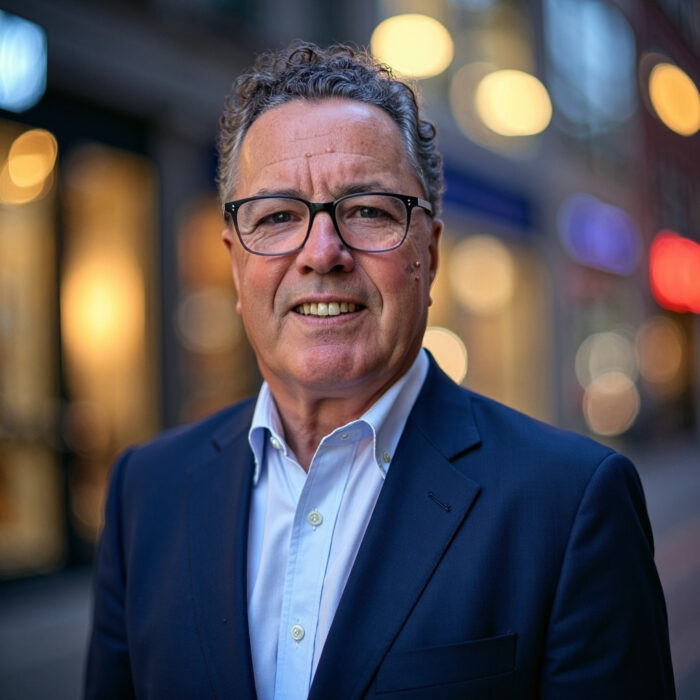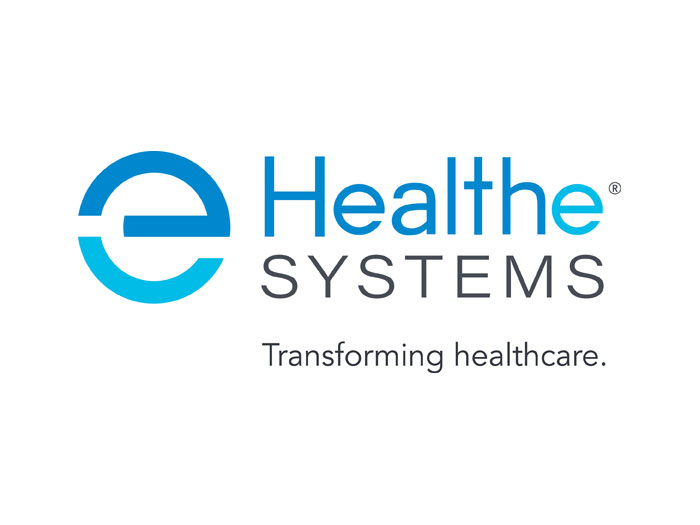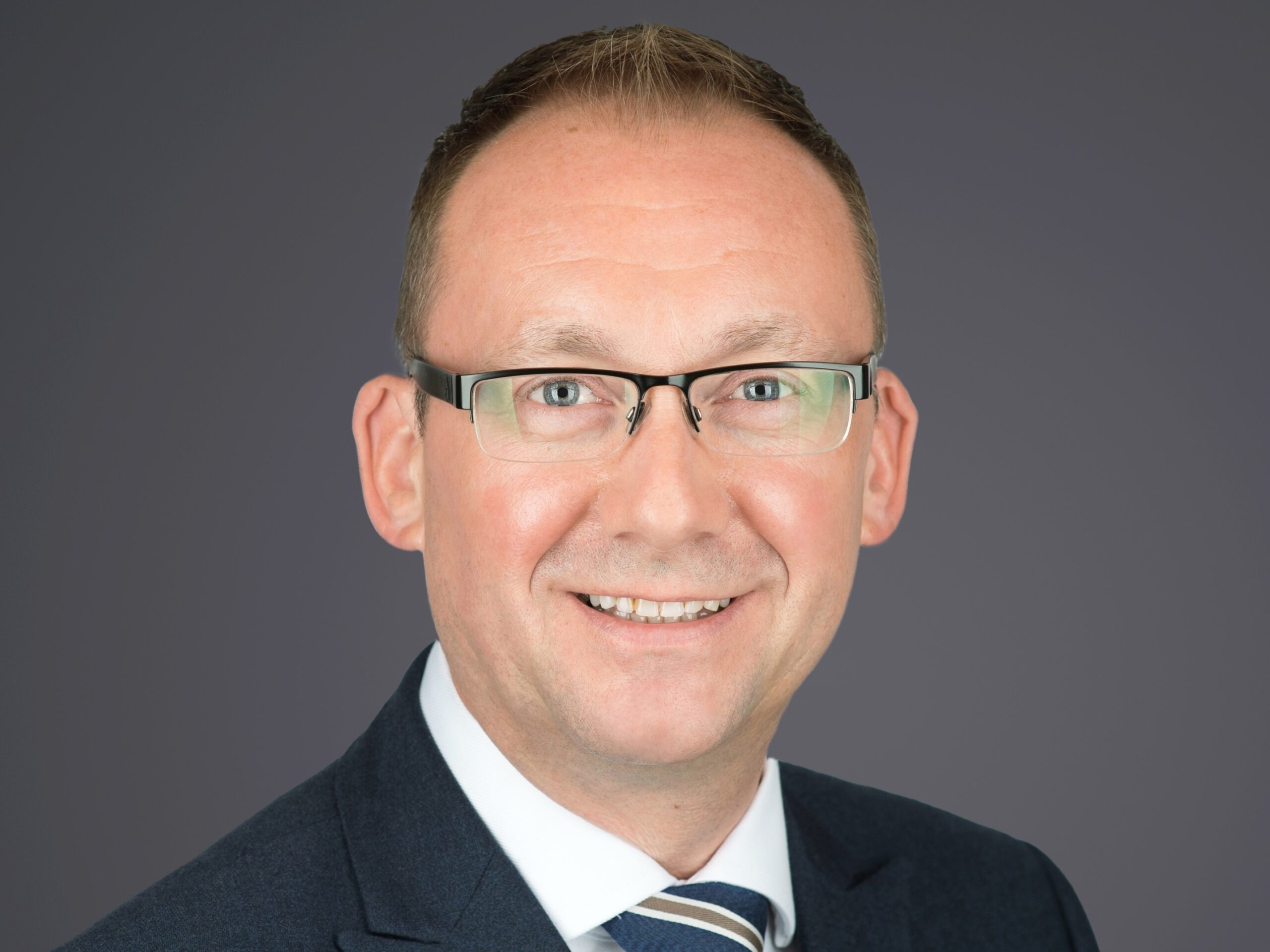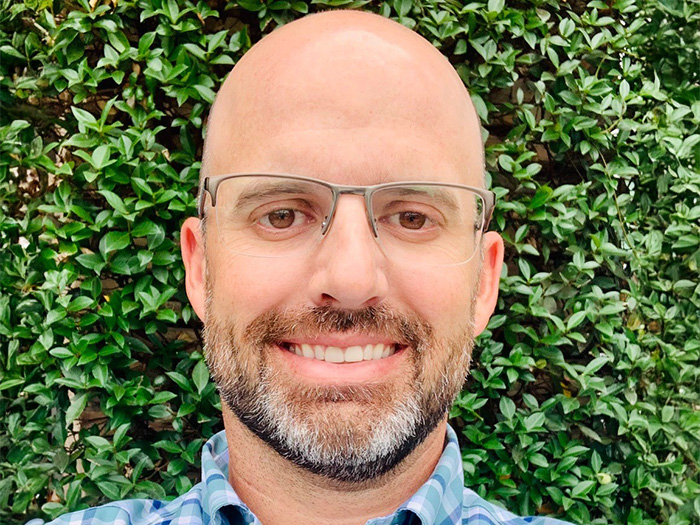On the Record with John Dempsey of Insight Risk Technologies

In mid-November, Dan Reynolds, the editor in chief of Risk & Insurance, caught up with John Dempsey, the co-founder and CEO of Insight Risk Technologies. What follows is a transcript of that discussion, edited for length and clarity.
Risk & Insurance: Nice to meet you John. Please give us a brief background on your company before we move on to other questions.
John Dempsey: I’m an accountant by training. After graduating college, I worked in New York for a small accounting firm focused on helping insurance companies evaluate property and business interruption claims. Today they call that forensic accounting, but back then we were called “loss” accountants.
After six years of that, I had an opportunity to work for a large paper company, essentially doing the mirror image of my previous experience by helping the client prepare its insurance claims. I loved this because we started each claim project with a blank sheet of paper and had to quantify and prove the claim for payment rather than review and often take issue with someone else’s work.
This business eventually became Dempsey Partners, which assisted clients in a wide variety of claims and related matters. We grew to about 30 practitioners before being acquired by Aon in 2013. I served Aon as the global director of their Claim Preparation, Advocacy, and Valuation business, and had the privilege of working with an amazing team of brokers and consultants all over the world.
I retired in 2017, took some time off, then began to work on several startup initiatives including Insight Risk, which embodies my passion for merging insurance and innovation.
Risk & Insurance: Innovation is a hot topic in the insurance industry. Can you share your perspective?
John Dempsey: To me, most innovation is client-generated, with an assist from people willing to explore the unknown. The risk manager of my original client – the paper company – was frustrated that it took so long to get claims resolved, with so much administrative time to satisfy insurer document requirements. He reached out to my employer for assistance, and I was the lucky guy assigned to the first project. I didn’t know it at the time, but that engagement helped to create the claim preparation industry. Today most corporate claims are prepared by third party consultants.
Another example happened years later after the tragedy of 9/11; insurance markets were turned upside down in terms of pricing and deductibles, both of which went up substantially. One of our clients was exploring ways to rein in premium increases, and decided she would examine their reported business interruption value, which is a key pricing metric. She asked us to validate the BI values submitted by the company’s business units. We ultimately optimized premiums by standardizing the process and reporting the correct numbers. This was a first in my experience, but now it has become standard practice, even spreading beyond property insurance to include supply chain and cyber risk quantification.
R&I: How does Insight Risk embody the approaches you discussed regarding claims preparation and proper valuations?
JD: Over my career, I’ve learned that clients have their own unique set of needs. Over time I learned to identify those needs, and working with some of the best accountants in the business, develop solutions to meet them.
For example, regarding business interruption values, we had never done a BI value study before. However, I understood what the client needed and why it made sense, so we developed a solution.
I try to understand in the big picture what improvements in the current business model could help constituents meet their needs. Although I focused on the risk management side for a long time, which included working closely with brokers, in recent years I’ve been trying to do the same for insurance companies. What we’re doing at Insight Risk could be a significant step towards innovating the property insurance market.
R&I: What are the key business opportunities that insurers are seeking from your company?
JD: Insurers aren’t actively coming to us with their needs in our particular area. Instead, we approach them and explain situations that we believe would be beneficial to them and try to quantify those benefits.
The significant opportunity we see right now is the convergence of property and builder’s risk insurance with technology. Much of the current innovation in the industry is focused on transactional efficiency, such as the excitement around blockchain a few years ago and other more recent process innovations. However, these improvements tend to be around the margins.
We pose a rhetorical question to insurers: if they could reduce their builder’s risk loss ratio by 25%, would they do it? Our analysis of loss ratios for builder’s risk carriers reveals that about half of the losses they pay in the vertical construction segment are the result of non-flood water damage. To take it a step further, most of the causes of these losses are preventable, such as frozen and leaky pipes.
The solution lies in technology, particularly early warning systems for events that could lead to major losses. For example, by strategically placing IoT devices around construction sites, we can detect falling temperatures, high humidity, water presence, and other environmental factors. When an alert is triggered, a designated project team investigates immediately so that the issue is addressed promptly, preventing potential losses.
Initially, we suggested to carriers that this technology could eliminate up to 90% of water damage losses incurred from construction sites, because we can all but eliminate the larger losses. While this claim might seem far-fetched, studies and common sense support it. But even if the technology works at 50% or 70% effectiveness, it still represents huge potential savings on a book of business.
R&I: What happens when there is a leakage alert on one of your projects?
JD: When an alert is triggered, the contractor or project owner is the primary responder, but we support them. First, we help prepare a water damage prevention and response plan specific to the job site. This plan not only provides tips for avoiding water damage losses but also prescribes the response protocol in case of an incident.
The plan includes contact information for the designated team members, ensuring that when an alert is received through various channels like text, email, or in-app notifications, the entire team is aware of the situation.
Recently, we experienced this on a large renovation project for a university. One of our sensors detected water in an elevator shaft, and the contractor responded immediately. They discovered a small flood caused by a leaky hose that shouldn’t have been there. By fixing the issue promptly, they avoided a potentially larger incident that could have occurred if the alert had gone unnoticed for an extended period, such as over a weekend.
R&I: What has been the reaction from insurers when you present them with your capabilities?
JD: The reception from insurers has been very positive from the beginning. Out of the first 20 or so carriers we approached for capacity in 2021, not a single one took issue with our approach. This was after we had hired an underwriter and validated the math behind our value proposition, which is based on objective data and makes intuitive sense.
Without our technology, a water damage loss that happens on a Friday night after everyone has gone home could cause significant damage if left to run over a weekend. By enabling early intervention through the sensor alert and immediate response, damage is minimized. In the couple of years since those early days, insurers have become much more sophisticated in their understanding of IoT loss control and risk management. There is now a growing buzz in the industry acknowledging the need for and value of these types of solutions.
Our approach is noninvasive, without requiring extensive programming or complex processes. By strategically placing sensors on job sites, we aim to detect and mitigate potential issues before they escalate into major losses.
R&I: What do you view as the main obstacles or challenges to growth or implementing your vision for Insight Risk?
JD: While insurers have expressed positive sentiments about our technology offering, it doesn’t mean they are ready to immediately shift all their business or capital to Insight Risk. Many carriers have stated that they are content with their current builder’s risk program and are hesitant to compete with themselves by sending business our way. This reluctance to change partly explains the slow pace of innovation in the industry.
Brokers, too, are comfortable with their long-standing relationships and practices. They are making money, so there’s little incentive to upset the status quo. However, there are always some who recognize the value in trying something new, believing their clients will appreciate a better offering.
Our selling point to brokers is that our model provides superior results, and it will help their clients become better risks to their insurance carriers, potentially reducing the premiums they pay for coverage. Despite having appointments with over a dozen brokers nationwide, we’ve found that most of our business comes from just 20% of the brokers, who are the early adopters.
R&I: Is your company’s approach appealing to newer entrants in the workforce?
JD: Absolutely, 100%, and it was part of the plan co-founder Chad Hollingsworth and I created in the beginning. Starting with our first hire, Mike Reich, our Chief Underwriting Officer. Mike was doing amazing work in his previous position with a global carrier, but sought an opportunity that would bring to life an innovative underwriting model he had been pondering for some time. It’s difficult to introduce innovations like that into legacy systems, but for us it was simply a matter of plugging it in and letting it go. We think it is the best rater in the market.
Since we purposely have “technologies” in our name, we need to deliver industry leading IoT solutions. Our third co-founder Bret Bush led the IoT innovation labs at two global carriers before joining us, where he piloted over 100 deployments on construction sites. Bret’s unique construction tech experience helped us attract two other experts with similar backgrounds from outside the insurance industry who also understand our mission and want to be on the journey.
That same passion is found in all the people who have been involved with the company, from other new hires with backgrounds in other industries to college interns. We also had the opportunity to partner with Extern, a company providing professional experiences to university and community college students, so students learned more about our segment of the insurance market.
We have built growth and innovation into our core values so we actively encourage team members to seek out new technologies that could further improve our offerings and value proposition. That’s the mindset, and for me personally, being way older than everybody else, it keeps me going. It’s the greatest.
R&I: What emerging risk mitigation technologies are you seeing in the insurance industry, even if they are still in the development stage?
JD: Water damage was our starting point, and we’ve been working to solve this problem. However, we’ve also expanded into fire risk. While the technology and maturity of solutions in this area are not at the same level as water damage, they are progressing in the right direction.
Our goal is twofold. First, we aim to help solve the fire problem by preventing fires through technology, similar to the Smokey Bear strategy. We’ve made some progress in this area with our vendor partners operating in the builder’s risk context.
Second, we believe that many of the same problems exist in the built world, which includes fixed properties, operating properties, and large property schedules. We see substantial potential for applying this approach to prevent losses in these types of properties as well.
By tackling fire and water damage, we can address 80 to 85% of all substantial non-cat property losses.
R&I: What have you learned about being an innovator, in terms of resilience and persistence in getting your vision implemented?
JD: Persistence is indeed the right word. You have to believe in what you’re doing and have great confidence that your audience and potential customers will understand and see the legitimacy of your value proposition, even if not right away.
Communicating this effectively is crucial, and we’ve made significant progress in our communication and messaging. In fact, during a recent trip to London, several Lloyd’s brokers complimented our marketing team, appreciating the unique content we put out, such as deal descriptions and averted loss information, which stands out from what insurers typically publicize.
We take pride in helping companies avoid losses. Risk managers are hungry for cost-effective solutions that don’t disrupt existing processes or overturn long-standing carrier relationships. We aim to maintain an elegant mix of old and new, acting more as financial enablers than industry disruptors.
When a risk manager avoids a $5 million water damage loss, it’s a significant victory for them, and insurers and brokers also benefit from the knowledge that effective solutions exist. The question remains: if this is true, why isn’t everyone doing it? That’s the position we’re in right now, trying to understand and address why it hasn’t been more widely adopted.
R&I: What does valuable communication look like when trying to get your point across?
JD: Valuable communication is structured with a blend of facts, information, and even persuasion. It’s not enough to simply present what you’re offering; you need to express it in a way that resonates with the customer’s needs and thought process.
When structuring our messaging, we put the client first. We consider their pain points and needs, and then we clearly articulate how our solutions address those issues. It’s about providing evidence that our approach can be successfully implemented.
For example, in a recent conversation with a university risk manager, I explained how our technology would have detected a falling temperature inside their new gymnasium several hours before a pipe froze and burst, which would have allowed them to take preventive action. This real-world scenario demonstrated the tangible value of our offering in a way that surprised the risk manager, as they had previously considered the loss unavoidable.
Effective communication is about understanding the customer’s needs, clearly outlining the outcomes and solutions, and providing evidence that it can be achieved. It’s a persuasive rubric that goes beyond merely stating facts.
R&I: Is there anything else you think our audience might find valuable or interesting in what you’re doing that we didn’t ask you about?
JD: I’m always optimistic about things that can be done, even if they haven’t been done before. I try to look at this from a big picture perspective.
Sprinklers, for example, were invented 150 years ago and are a great passive form of risk control for fire. However, I believe that we’ve focused too much on passive forms of loss prevention, such as requiring sprinklers in a building or constructing an MFL wall between two large warehouse areas on the theory that a fire won’t spread from one to the other.
With technology, we can now move into a new era of more active risk control. I get 30 to 40 alerts every day on my phone from different facilities that we’re monitoring. We know at any time when a sensor is offline or has detected temperature changes, water, excess humidity, or other issues 24/7. The actual response is the insured’s responsibility, guided by a plan that we help them create.
Risk managers are interested in knowing what’s going on in their buildings. They understand the connection between loss prevention and TCOR. Now they are getting the tools to make water damage loss prevention a reality, which in time will also encompass fire prevention.
R&I: What can the insurance industry do to better showcase its benefits and value to society?
JD: The insurance industry has done a poor job of explaining and positioning how absolutely amazing it is. Despite the excitement about the business and its potential, insurance companies seem to gravitate towards a lack of change and a passive approach.
To better showcase the benefits of insurance, the industry needs to be more proactive in communicating its value. It should highlight how insurance provides financial protection and peace of mind to individuals and businesses.
Moreover, the industry should emphasize its role in enabling economic growth and stability. By mitigating risks, insurance allows businesses to operate and expand, creating jobs and driving innovation. The industry’s contributions to society should be front and center in its messaging.
R&I: What steps can the insurance industry take to better position itself for the future?
JD: Many people in the insurance industry are content with the current state of affairs, and change is not always a top priority. From that standpoint, I believe things will remain largely the same for some time. When I mentioned an elegant mix of old and new, I meant that we’re comfortable with that balance. We appreciate the traditional aspects of the industry, such as the need to visit London and have actual meetings with real people to get things done. Relationships are a feature of our industry that I believe should be respected and preserved.
At the same time, we also embrace innovation, but we do so incrementally. We’re not completely upending everything. I personally enjoy being at the forefront and leading the charge, especially when things work out!
I appreciate that more universities are offering risk management programs. If I had one wish, it would be for the industry to pay more attention to risk management as opposed to just insurance procurement. I believe there is significant value to be added in that area, and while RIMS has been working on this for a long time with a lot of success, it is always the case that more can be done. &










